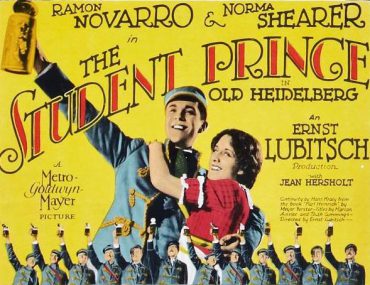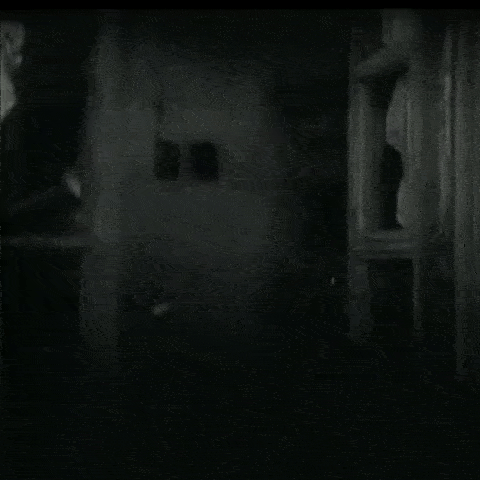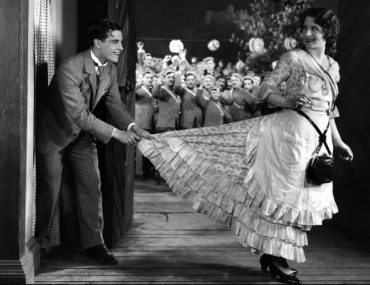THE STUDENT PRINCE IN OLD HEIDELBERG
(Old Heidelberg; GB: The Student Prince; Il principe studente)
Ernst Lubitsch (US 1927)
Score: Carl Davis (Thames Television; Faber Music Ltd.)
Performed live by: Orchestra San Marco, Pordenone
Conductor: Mark Fitz-Gerald

Even when the Great War was over, anti-German films like The Four Horsemen and Mare Nostrum were banned both by Germany and Austria. The Central European market had to be won back. In showing sympathetic characters in German uniforms, The Student Prince in Old Heidelberg followed the path set by Flesh and the Devil a year earlier.
The source novel, Karl Heinrich, about the impossible love between a crown prince and an innkeeper’s daughter, was written in 1899 by Wilhelm Meyer-Förster, who made it into a play in 1901, Alt-Heidelberg, which opened in New York in 1903 as Old Heidelberg. In 1915, John Emerson filmed the novel with Wallace Reid and Dorothy Gish, the role of Lutz the valet being played by Erich von Stroheim. (Since Emerson used the title of the play, a lawsuit promptly ensued.) In Germany in 1923, Hans Behrendt adapted the play for the screen, starring Paul Hartmann and Eva May. An operetta, The Student Prince, by Dorothy Donnelly and composer Sigmund Romberg, opened in New York in 1924 and ran for several years.
At M-G-M, William Wellman was promised the film as a reward for doing retakes on a Sternberg picture. Then he was fired, made Wings for Paramount, and became a star director. The Student Prince was offered to Erich von Stroheim. But his memories of being fired by Irving Thalberg on the 1925 Merry Widow were still painful. So Stroheim went away and made The Wedding March: a film about the impossible love between a prince and a shopkeeper’s daughter.
In 1926, still under contract to Warner Bros., Ernst Lubitsch was negotiating with Paramount. M-G-M hoped to borrow him, then win him away for good. Warners offered to raise his salary, but Lubitsch signed with Paramount. (And thus missed making a film he had had his eye on, The Jazz Singer.) A compromise was reached. Both Paramount and M-G-M would pay compensation to Warners. Lubitsch would make Old Heidelberg for M-G-M, then join Paramount.
Lavish sets and large crowd scenes made his new project M-G-M’s second most expensive silent film after Ben-Hur (it cost $1.2 million). But while the story department had reportedly been in touch with Meyer-Förster in 1925, it seems they ended up buying the rights to the operetta, and had to change the title of their film, first announced as Old Heidelberg (the title on this print).
Having secured Hans Kraly, Lubitsch’s scenarist, M-G-M – apparently against the wishes of the director – chose two of their best-known stars for the principal roles. For the Crown Prince, Ramon Novarro, who had played the lead in Ben-Hur. For the role of Kathi, May McAvoy, Marceline Day, and Fay Wray had been considered (Fay Wray did The Wedding March instead). Norma Shearer got the part, but proved troublesome, even though she was the fiancée of Irving Thalberg.
According to Sam Marx, story editor at M-G-M, Lubitsch felt she was playing the waitress in too grand a manner. Lubitsch, usually mild-mannered, lost his patience. “‘Mein Gott!’ he shouted. ‘I can get a waitress from the commissary who will do better than you.’” Shearer asked for Thalberg to be brought to the set. “Lubitsch sat down calmly in his director’s chair, pulling on his unlit cigar, while everyone within earshot waited to see what would happen. What happened was that Thalberg listened to his bride, kissed her lightly, and said, ‘Darling, I’m sure we can all learn a lot from Mr. Lubitsch.’”
“The vast backlot at Culver City now resembles a corner of romantic Germany,” wrote Arnold Höllriegel, a German journalist visiting the set. To achieve authenticity, 32 trunkloads of uniforms and equipment had been brought over by Lubitsch’s costumier. Editor Andrew Marton said they used the biggest stage at M-G-M, with Heidelberg Castle as a false-perspective set. Outdoor scenes were shot in Laurel Canyon, whose oak trees were reminiscent of Heidelberg. Winter was simulated by having cast and crew pick off the leaves.
Still Lubitsch was dissatisfied. During a trip to Europe he filmed exteriors of Heidelberg Castle. By the time the German footage arrived the picture was practically finished, and none of it was used. With M-G-M notorious for its retakes, contemporary sources have John M. Stahl reshooting a crucial love scene during Lubitsch’s absence. Not according to Marton, Lubitsch’s editor, and, as script clerk, present on the set: he has Lubitsch, unhappy with the scene (the flowers in particular seem to have incurred his displeasure), reshooting it himself.
Beyond the witty, sophisticated style for which he was renowned, Lubitsch brings a darker tone to this film. (Though Marton notes that all allusions to Heidelberg’s “fencing fraternities” had been eliminated as alien.) The love story of a Prince and a peasant girl becomes something more universal than simply sacrifice in the face of duty: a reminder that past rapture can rarely be recaptured. A trade paper forecast that the picture would become “one of America’s greatest peacetime diplomats, soothing the cruel hurts inflicted by the World War”. When the film was released in England in 1929 (as The Student Prince) it was voted the best picture of the year.
There’s one more thing: a rumour that during World War II, the USAAF general in command of the relevant sector so loved the film that he prevented Heidelberg being bombed. It’s as well no one told him that not a frame of the final print was actually shot there.
Kevin Brownlow, Caroline M. Buck

exec prod: Irving Thalberg.
scen: Hans Kraly [Hanns Kräly].
photog: John Mescall.
scg/des: Cedric Gibbons, Richard Day, [+ Hans Dreier?].
cost: Ali Hubert, Eric Locke.
mont/ed: Andrew Marton.
did/titles: Marian Ainslee, Ruth Cummings.
asst dir: George Hippard.
script clerks: Andrew Marton, Joseph Newman.
cast: Ramon Novarro (principe/Prince Karl Heinrich), Norma Shearer (Kathi), Jean Hersholt (Dr. Juttner), Gustav von Seyffertitz (re/King Karl VII), Philippe de Lacy (il piccolo/young Karl Heinrich), Edgar Norton (Lutz), Bobby Mack (Kellerman), Edward Connelly (maresciallo di corte/Marshal of the Court), Otis Harlan (il vecchio/Old Ruder), John S. Peters, George K. Arthur (studenti/students), Edythe Chapman, Lionel Belmore, Lincoln Steadman, Ruby Lafayette.
prod: M-G-M.
copia/copy: 35mm, 9299 ft., 105′ (23-24 fps; brief sections 22 fps), col. (imbibito/tinted – 2 sections only); did./titles: ENG.
fonte/source: Photoplay Productions, London.



 Italiano
Italiano